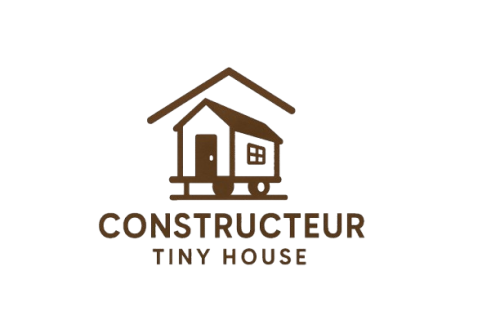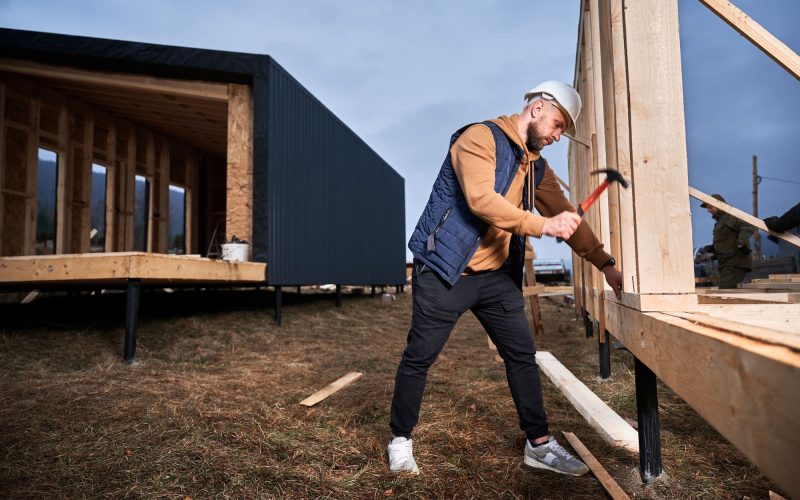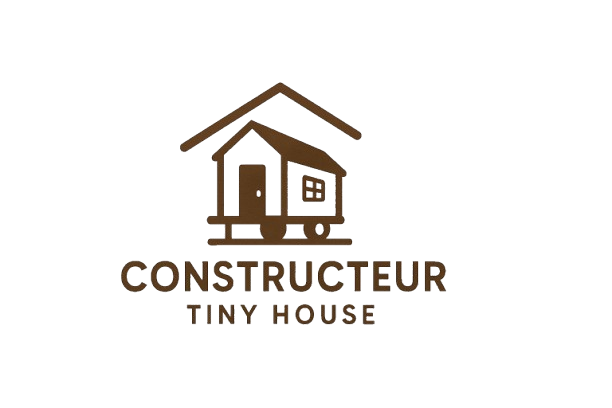Is it really possible to set up a tiny house on land that cannot be built on? This is the question on the minds of all those who dream of a sober, mobile living project, and are faced with sometimes vague regulations. In this article, you’ll find out which areas are permitted, and the practical steps you need to take to turn your idea into reality, while respecting the town planning code and preserving the freedom of an ecological lifestyle.
Contents
- Legal framework for tiny houses on non-constructible land
- Legal status of tiny houses and installation conditions
- Authorized zones and exceptions for tiny houses
- Administrative procedures and authorizations required
- Practical solutions for living in a tiny house on non-buildable land
Legal framework for tiny houses on non-constructible land
To understand the specific features of tiny houses, an analysis of the legal framework is essential before considering their installation. A non-constructible plot of land is a plot of land where town planning prohibits permanent construction. The tiny house, defined by the Alur law as a light, dismountable dwelling, escapes certain rules under conditions of mobility and surface area.
Non-constructible land is divided into agricultural (A), natural (N) and non-constructible (PPR) zones. The local urban development plan (PLU) sets the rules for use. In zone A, only agricultural buildings are authorized. In zone N, all permanent installations are prohibited, with exceptions such as the pastille zones. Tiny houses are permitted in these zones, provided they meet the criteria of autonomy and dismantlability laid down in the town-planning code.
Legal status of tiny houses and installation conditions
Do you want to know whether your tiny house is a light dwelling or a stationary vehicle? Its status depends on mobility and usage criteria. A tiny house on wheels remains a mobile residence if it can be moved at any time. Without wheels but dismountable, it becomes a light leisure dwelling (HLL) if it occupies less than 35m² and remains temporary. The 2014 ALUR law clarified this framework, integrating these light habitats into the town planning code.
| Legal status | Key features | Necessary permits |
|---|---|---|
| Demountable residence | Occupancy ≥8 months/year. No foundations. Network-independent. Easily dismantled. | 5-20m² : Prior declaration. >20m² : Planning permission. |
| Caravan | Wheels for road circulation. Temporary use. Regulated dimensions (12m x 2.55m). | Parking restricted to dedicated areas (campsites, STECAL). |
| HLL (Habitation Légère de Loisirs) | Seasonal use. SDP ≤35m². Can be dismantled without wheels. | In leisure zones: SDP ≤35m² → exemption. >35m² → prior declaration. |
| SDP: Surface de Plancher (floor area). Rules vary according to local PLU and protected areas. | ||
Ready to install your tiny house on non-constructible land? There are exceptions, but beware of the pitfalls! A mobile home can occupy agricultural land, provided it can be dismantled and is not connected to the mains. In natural zones, only a specific STECAL authorization or a “pastille” zone in the PLU allows installation. What if your tiny house is fixed to the ground? It becomes a conventional building, requiring a building plot. Consult your local council to check the local rules!
Authorized zones and exceptions for tiny houses
Lozenge and STECAL zones: an opportunity for your project
Zones pastilles, also known as STECAL, are areas defined in the Local Urban Plan to accommodate light housing. To better understand the advantages of these zones, particularly in light of the ALUR law, take a look at this parliamentary question. They allow tiny houses to beset up on non-constructible land, while preserving natural or agricultural areas.
To identify whether a plot of land that cannot be built on belongs to a pastille or STECAL zone, here are the criteria to check:
- Consult the PLU to identify zones dedicated to light housing.
- Look for the words “STECAL” in the PLU regulations
- Evaluate the surface area of the plot (generally between 200 and 500 m²)
- Local planning rules
Administrative procedures in STECAL zones require a prior declaration if the floor area is less than 20 m², and a building permit for larger areas. The project must respect local specificities and justify a demountable structure with no permanent connection to public networks.
Exceptions for farmers in agricultural zones
Non-buildable land in agricultural zones can be used for tiny houses linked to farming activities. The structure must be mobile or demountable, with no fixed foundations, and justify a direct link with the farm.
For installation to be accepted in agricultural zones, the tiny house must comply with certain technical constraints. It must be self-sufficient in energy and water, not exceed the dimensions authorized for transport (12m long, 2.55m wide, 4.3m high), and remain compatible with the rules of the local PLU.
Administrative procedures and authorizations required
Prior declaration and building permit
A prior declaration is all that’s needed for tiny houses under 20 m². This simplifies installation on land that cannot be built on. No building permit is required for these small surfaces.
Planning permission is required for tiny houses larger than 20 m². It requires precise plans, a descriptive note and a detailed project. This procedure guarantees compliance with the town planning code and local regulations.
Duration of parking and temporary installation
You can park for up to 3 months without authorization. After that, you’ll need to make a declaration. This rule applies to all mobile homes on non-constructible land.
To extend your installation legally, show that your project is temporary. Avoid permanent connections to public utilities. These precautions make it easier to accept a prolonged presence on land that cannot be built on.
Prior consultation with the town hall and the PLU
Consult the Local Urban Plan to identify authorized zones. Go to the town hall to obtain the installation rules specific to your municipality. This step prevents unpleasant surprises.
Talk to the town planning department to understand local constraints. Ask specific questions about tiny houses in your area. Show your willingness to respect the rules while defending your tiny house project.
Planning certificate and preliminary studies
The town planning certificate provides information on the rules applicable to your plot of land. It’ s essential before setting up on land that can’t be built on. Ask for one at the town hall to secure your project.
| Study | Objective |
|---|---|
| Soil investigation | Verify the stability and suitability of the site |
| Environmental study | Assess impact on local ecosystem |
| Technical diagnostics | Check specific site constraints |
Anticipate technical challenges before installing your tiny house. Assess the site’s natural conditions and accessibility. These precautions will help you avoid unpleasant surprises when installing your tiny house on land that is not suitable for building.
Practical solutions for tiny house living on undeveloped land
Energy and water self-sufficiency
Eco-friendly wooden tiny houses often incorporate energy-saving solutions. Photovoltaic solar panels can be installed on the roof or next to the plot. A 300W kit powers LED bulbs, TVs and refrigerators. To store energy, lithium or gel batteries are combined with a hybrid inverter. My Shop Solaire offers German SolarWorld panels, efficient even in winter.
Rainwater harvesting optimizes water autonomy. A 350L cistern, like the Capucine model, supplies the kitchen and shower. UV or activated carbon filtration ensures potability. In winter, insulate pipes or use underground tanks. Dry toilets with litter reduce consumption by 30% by avoiding the need to rinse with water.
Autonomous sanitation and ecological solutions
Autonomous sanitation makes the most of non-collective systems. Micro-purification plants treat grey and black water. Phyto-purification uses plants to filter wastewater. Dry sawdust toilets avoid liquid discharge. Each solution must comply with local standards and the advice of the SPANC (Service Public d’Assainissement Non Collectif).
- Dry toilets with compostable litter
- Phyto-purification systems with reeds
- Biolan Light filters to recycle 300L/day
- AdditionalBioCleaner 4 EHmicrostation
Maintaining on-site sanitation requires vigilance. For dry toilets, renew the sawdust regularly and compact the residues. An above-ground septic tank requires emptying every 2 to 3 months. Avoid aggressive chemicals to preserve the biological treatment of wastewater.
Installing a tiny house on non-constructible land requires legal vigilance, but zones pastilles or STECAL offer rare opportunities. By combining clear administrative procedures (preliminary declaration, permit) and autonomous solutions (energy, water), your project will take shape in compliance with town planning regulations. Imagine your mobile tiny house, anchored in eco-design: a lightweight, legal habitat in line with your dreams of freedom. Taking action means transforming constraints into creativity.


